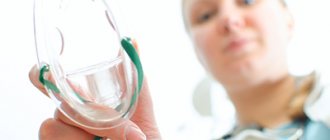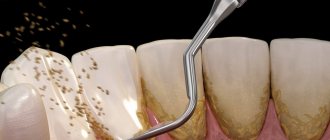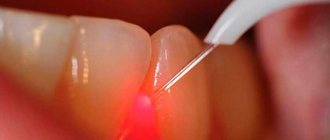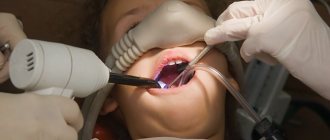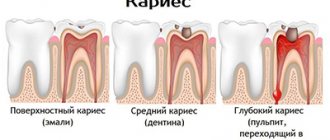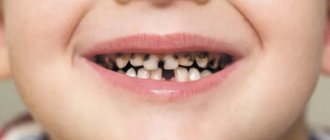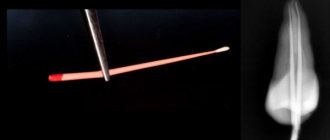- Questions and answers
- Stock
- Reviews
To make the treatment as painless and comfortable for the patient as possible, anesthesia is performed. Dentists at NovaDent clinics in Moscow and the region use drugs that guarantee quick and reliable results. The price of anesthesia will have almost no effect on the overall cost of the procedure, but will ensure a comfortable visit to the dentist, relieving the patient of fear and stress.
Types of anesthesia in dentistry
Pain relief occurs:
- Infiltration.
- Provodnikov.
- Intraligamentous.
- Application.
- General (anesthesia).
Infiltration anesthesia is used to numb a small area of intervention for up to 60-90 minutes.
Conduction anesthesia in dentistry is used if the dentist’s work area is larger than with infiltration anesthesia. The duration of action increases to 90-120 minutes. Most often, part of the trigeminal nerve is anesthetized, which allows you to “turn off” the area of several teeth at once.
The intraligamentous version is used mainly in children, since it eliminates numbness of the tongue, cheeks, lips, and their unintentional injury. In adults, this type is ineffective.
Applications are convenient for anesthetizing the working area when opening abscesses and manipulating the apex of the gums. The gel or ointment is applied to the desired area using a cotton swab, and after a few tens of seconds an anesthetic effect occurs.
General anesthesia in dental offices is rarely used in the presence of psychiatric pathologies, patient inadequacy, allergies to local anesthetic drugs. The presence of an anesthesiologist is required, which limits the use of the method in small offices.
Prices for dental treatment under general anesthesia in Moscow
The price for dental treatment under anesthesia in Moscow will depend on what type of drug will be used and what specific operation will be performed on the patient. If a drug administered intravenously is used in dental treatment under anesthesia, the cost of anesthesia can range from 10,000 rubles. Anesthesia using the mask method will cost more - from 15,000 rubles per hour of medicated sleep.
exact price of dental treatment under anesthesia during a consultation with a doctor at our dental clinic in Moscow - “Firadent”. We offer our patients the service of dental treatment under anesthesia - for this, our clinic has the necessary equipment and employs competent specialists - an anesthesiologist and resuscitator.
Dentistry "Firadent" - all conditions for safe, painless and high-quality dental treatment of any complexity!
Indications for anesthesia
Local anesthesia in dentistry is indicated for:
- Small interventions. If you need to prepare a small area of a tooth, open an abscess, or perform manipulation on the gum, local anesthesia is chosen. It provides sufficient strength and duration of pain relief with a minimum of side effects and contraindications.
- Removal of one or more teeth, their roots, with the exception of cases of increased individual sensitivity, psychiatric diseases, phobias in children.
- Deep caries, periodontal diseases, periodontal disease. Local anesthesia allows the entire procedure to be carried out without pain and with comfort for the patient.
- Presence of contraindications for general anesthesia.
General anesthesia is indicated for:
- Major surgeries with high trauma. General anesthesia is often used in oral surgery when bone manipulation is performed or teeth are implanted into the alveoli.
- Allergic reactions to local anesthetics.
- Psychiatric, psychosomatic disorders. Such patients are capable of going on a rampage, causing harm to themselves or others, and cannot sit quietly, so general anesthesia is used.
How is the treatment carried out?
Before the procedure, there is no need to lubricate the oral mucosa with an antiseptic. Such manipulation will increase discomfort and will not be beneficial. The dentist will determine which tooth needs to be numbed and inject the medicine into certain points in the gum. The dentist is guided by data from normal anatomy and looks for places where the nerve passes.
After the injection, according to reviews, many feel bloating, heaviness and a rush of heat to the gum. But then it goes away. There remains a feeling of density. From this moment the doctor can begin treatment.
If topical anesthesia is used, then in this case the drug is applied to the gums. The sensations and subsequent stages are the same.
Types of drugs
Modern anesthetics are produced on the basis of Articaine. The effectiveness of Lidocaine is 2-3 times lower in comparison with them, and Novocaine is 4-6 times lower. Articaine preparations are allowed to be used for inflammation, since they do not lose effectiveness in such conditions. A special feature is the addition of vasoconstrictor drugs (such as adrenaline), which reduces absorption into the bloodstream and increases the strength and duration of pain relief.
- "Ultracaine". A French drug, available in three variations, which differ in the concentration of adrenaline. “Ultracain D” does not contain a vasoconstrictor component, “Ultracain DS” does contain an adrenaline concentration of 1:200,000. The strongest is “Ultracain DS forte” with an adrenaline concentration of 1:100,000.
- "Ubistezin". The German analogue of Ultracain, they are identical in composition. Two variations are available: “Ubistezin” with an adrenaline concentration of 1:200,000, “Ubistezin forte” - 1:100,000.
- "Septanest". An outdated product, rarely used. Available in adrenaline concentrations of 1:100,000 and 1:200,000. Unlike the previous ones, it contains EDTA and sodium metabisulfite preservatives, which can cause immediate allergic reactions.
- "Scandonest". French medicine based on mepivacaine. Does not contain preservatives or vasoconstrictors. It is used in patients at risk who suffer from bronchial asthma or cannot tolerate epinephrine.
Infiltration anesthesia: application
Indications
- Treatment of pathological conditions of teeth and gums (caries, pulpitis, etc.);
- Removal of teeth of varying complexity;
- Implantation operations;
- Prosthetics;
- Opening the abscess and draining it;
- Removal of tumors on the oral mucosa;
- Surgical dental intervention in the oral cavity.
Contraindications
- Identification of the patient’s individual intolerance to the components of painkillers;
- A pronounced inflammatory process in the oral cavity (anesthesia may not give the desired result);
- The patient has a mental illness;
- Neoplasm of malignant nature.
Methods
The following techniques are used to administer anesthesia in dentistry:
- Intraoral anesthesia is performed using two methods:
- Finger. The patient opens his mouth wide, the doctor places his finger on the retromolar fossa. The needle is inserted behind the nail, above the chewing planes of the molars. With an injection depth of 1-1.2 cm, up to 0.5 milliliters of anesthetic is released to remove the sensitivity of the lingual nerve. At a depth of 2 cm, resting the end of the needle on the bone, another 1-1.5 milliliters is injected. After this, the needle is advanced parallel to the bone another 2 cm, and up to 2 milliliters of solution is injected at this point. This blocks the transmission of impulses through the inferior alveolar nerve. Anesthesia occurs in 7-10 minutes and lasts up to one and a half hours.
- Fingerless. With this method, landmarks are determined visually. The needle is inserted into the outer part of the pterygomandibular fold in the first third of its length, in the posterior direction from the internal oblique line. The direction is perpendicular to the process of the lower jaw. Having reached the bone at a depth of 2 cm, an anesthetic is injected. After this, the needle is advanced parallel to the bone another 2 cm, and at the end another 2 ml of solution is injected.
- Infiltration anesthesia involves an injection into the projection area of the apex of the tooth root, the sensitivity of which must be blocked. The anesthetic leaks through the perforations of the cortical plate of the maxillary process. The terminal branches of the alveolar nerve are anesthetized.
- Intraligamentary anesthesia is a type of infiltration anesthesia. The needle is inserted into the periodontal ligament through the gingival sulcus. The tooth and gums immediately lose sensitivity.
- General anesthesia is performed only by a qualified anesthesiologist with constant monitoring of vital signs.
The achievement of the effect is determined by the sensation of tingling, numbness, or “goosebumps” on the corresponding half of the lip.
Pros and cons of infiltration anesthesia
| Pros: | Minuses: |
|
|
Contraindications to anesthesia
General anesthesia is not performed for:
Local anesthesia for teeth is contraindicated for:
- The need for extensive interventions.
- Allergic reactions to the drugs used.
- Injuries of the facial bones, in which the topography of the intervention area changes.
Main types of general anesthesia
Depending on the method of administration of the anesthetic substance, anesthesia can be carried out using two methods:
- inhalation;
- non-inhalation.
The inhalation technique is considered one of the most convenient and safest for surgical operations. A person inhales the drug through a mask, goes into a state of sleep for 15 - 20 minutes, after which he comes to his senses. Very often, the inhalation method is used to treat children in particularly complex clinical cases.
The intravenous or non-inhalation method involves introducing the substance into the blood through a vein. The patient falls asleep within a few seconds and becomes conscious after 30 minutes. During extensive surgery, the drug administered intravenously can “turn off” a person for several hours.
Complications after treatment
Errors in pain relief cause:
- Hemorrhages, hematomas. Occur when blood vessels are injured when a needle passes through soft tissue.
- Contracture of the lower jaw. Develops after damage to the pterygoid muscle if the needle was inserted near the fold.
- Neuritis. Develops as a result of touching nerves during manipulation.
- Broken needle. A serious complication that is caused by careless actions of the doctor - abrupt removal or attempt to turn the syringe when it has gone deep between the muscle and the bone. Removal occurs only in a hospital setting after a detailed x-ray diagnosis.
- Inflammation at the puncture site. Develops with insufficient antiseptic treatment of the injection site.
Advantages of using general anesthesia for dental treatment
What benefits can you get by using the service of dental treatment under anesthesia in Moscow? There are quite a lot of them:
- Dental treatment under anesthesia takes place without pain, without psychological discomfort and emotional stress;
- It becomes possible to carry out complex or lengthy dental treatment in the shortest possible time;
When treating teeth under anesthesia, the doctor fully concentrates on his work, is not distracted by the patient’s reactions, and this has a positive effect on the quality of the procedures performed.
The concentration and focus of a specialist are especially important when performing complex operations such as implantation, tooth extraction, and dental prosthetics.
USEFUL TO KNOW: Dental treatment under anesthesia also helps in endodontic treatment - treatment of tooth canals. This is a rather uncomfortable procedure for the patient, but it cannot be avoided if you need to cure pulpitis or periodontitis. Rushing to treat canals can result in the cavities being insufficiently cleaned or, even worse, a piece of dental instrument remaining in the canal. Such errors in the treatment of canals cause a relapse of the inflammatory process!
All these advantages of dental treatment under general anesthesia in their reviews not only by professional dentists, but also by patients who have already undergone the procedure.
When are permanent teeth removed?
Removal of permanent teeth in children is practiced only if there are serious indications:
- advanced or complicated carious process;
- complicated inflammatory processes accompanied by mobility of the crown;
- fracture of the crown of a tooth or its root;
- orthodontic treatment, when you need to make room for the development of other teeth;
- the appearance of supernumerary teeth that violate the integrity of the dentition;
- An unerupted tooth that cannot develop.
Wisdom teeth grow in after 18 years or more, but sometimes it is necessary to remove their buds in childhood. The reasons may be prerequisites for malocclusion, lack of space for the development of chewing teeth.
The decision to remove a permanent tooth is made after an x-ray and consultation with specialized specialists.
Wisdom teeth removal
These teeth are the outermost ones in the dentition of each jaw. They bear virtually no chewing load, but due to their location they often become the source of a number of dental problems:
- erupt late and often painfully;
- are incorrectly located in the gum tissue;
- crowd adjacent functional teeth, disrupting the correct bite;
- form tissue “pockets” in which the inflammatory and infectious process actively develops, etc.
Resection of wisdom teeth will not affect human health and will prevent many dental diseases. But this operation rarely goes without difficulties. Wisdom teeth are located in the very depths of the oral cavity, they are difficult to reach and extremely inconvenient to manipulate with instruments. Irregularly shaped teeth further complicate the process and often require cutting into the gum to remove them. Therefore, SM-Dentistry doctors often recommend removing wisdom teeth under general anesthesia.
General anesthesia is dangerous to health - is this true?
Preparations for general anesthesia do not consist of vitamins, but they cannot be called dangerous either. We use only certified, non-toxic materials that are quickly and completely removed from the body. In addition, general anesthesia is not used just like that; it is used in cases where tooth extraction without it will cause several times more harm than the anesthesia itself.
I saw a film where a man woke up during anesthesia and felt everything, but could not move. What if this happens to me too?
Such a plot is interesting, entertaining, successful with viewers, and due to the frequency of its use, it seems that this happens to every second patient. Actually no, intraanesthesia awakening rates are less than one percent! This happens due to the wrong combination of drugs - the sleeping pills stop working earlier, so the person wakes up, but cannot move. In modern medicine, such errors are excluded; the dose is calculated individually. In addition, the anesthesiologist monitoring the patient will notice changes in indicators and stop the operation.
Indications: when removal is necessary
Teeth have to be removed due to infections in the mouth that destroy the teeth. It is important to identify and treat such diseases in a timely manner. When therapy does not solve the problem, the tooth has to be removed.
Indications for the procedure:
- inflammation in the mouth
- root fracture,
- destruction of roots,
- gum injury,
- the need to make an arch on the jaw.
Tooth extraction is indicated for patients with periodontitis, cysts, and advanced caries. To prevent the problem, you should carefully maintain dental hygiene. The following also lead to extraction: its fractures, loosening.
